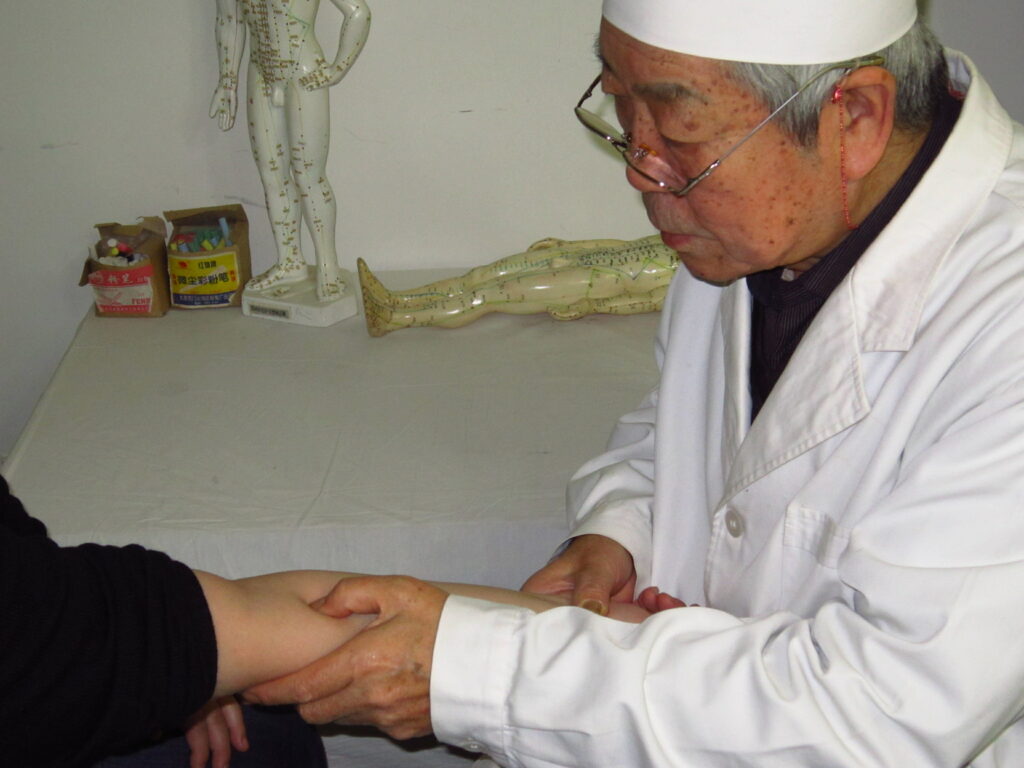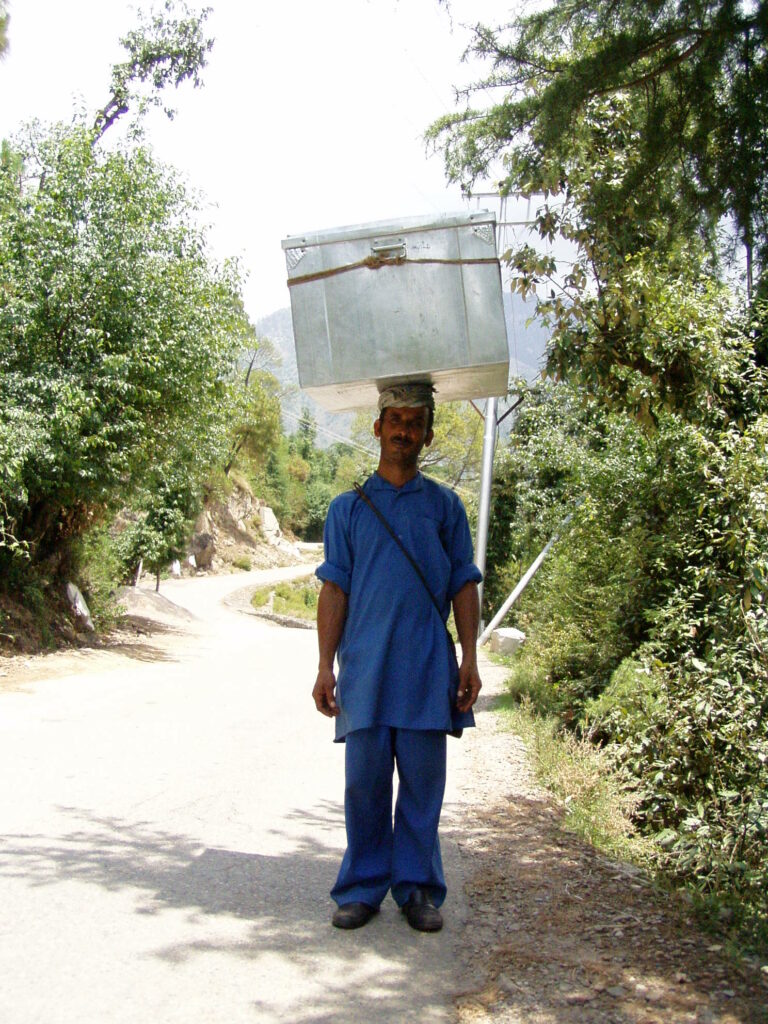This article is based on my notes, which were written in between 2011-2012 while studying with the late Prof. Wang Ju-Yi [王居易 1937-2017] in his Applied Channel Theory Research Center in Beijing, China.
Dr. Wang has had a unique diagnostic and clinical applications regarding the application of the medical theory of acupuncture channels of Chinese medicine and especially the application of the diagnostic method of channel palpation.
The following article will be focus on the different types of findings you can ‘feel’ or ‘find’ while you place your thumb and go along the pathway of the channels.
The six types of findings in channel palpation:
Type 1 – Lumps [結筷 jié kuài]
- Size: The largest finding may be between the size of a soy bean and a broad (lima) bean.
- May appear on the limbs, as well as on the back on the channels of the Du Mai and the Foot Tai Yang.
- Often the lumps are painful when pressed.
- If the lump found is located on the side of the crevice it could be an inflammation of the connective tissue, or, if found in the center of the crevice it would mean an accumulation of interstitial fluid.
- Lumps point at a chronic condition, as it takes more time for them to become that size.
- They signify a chronic condition of accumulation in the channels or the internal organs. For example, a lump in the area of Lu-6 could mean a chronic accumulation in the trachea.
- The wider the lump, the wider the expression of the pathology.
- The harder the lump, the more severe the pathology.
Example:
- Hardness in the area of PC 4 may signify a problem in the cardiac muscle.
- The wider the lump means the pathology is spread out over a wider area, and the harder the lump, the more severe the condition.
- If the lump is flexible then the pathology is not severe.
- If the lump is hard and deep, and after the treatment the lump does not disappear, it means the condition is more difficult to treat.
Summary – one must pay attention to:
- Size
- Hardness
- Depth
Type 1 – Nodules [結節 jié jié]
- Size: between a grain of rice and a mung bean
- ‘Chain nodules’: nodules and lumps can appear in a chain, one after the other, which signifies that the pathology is more extensive.
- Nodules and lumps with sharp edges/corners (the sensation in the fingers is similar to rock grains in a rice sack) – may signify that the disease is malignant, or that the pathology is chronic, stubborn, difficult to treat with a poor prognosis.
Type 3 – Collateral Nodule [結絡 jié luò]
- Thin, hard string-like findings which may appear across (horizontal) or along the channel pathways.
- What are they composed of? : small blood vessels, tendon fibers or thin ligament fibers which became displaced or thickened.
- They are caused due to injury to the tissue or changes in the interstitial fluid in the injured tissue.
- Very often, when there is a problem with the cervical vertebrae, they are found in the elbow region of the Hand Tai Yang channel.
- One must take note not to confuse this finding with trauma to the region, as pain would also be present.
Type 4 – Crispy Nodule [脆絡 cuì luò]
- Thin irregularly-shaped nodules with a grainy sensation, similar to glass that falls and smashes into tiny shards, or a potato crisp that falls to the ground and breaks into many pieces.
- They appear where the collaterals are more superficial, such as, but not only, in areas of Yuan-Source points and others, such as St-42, Pc-7, Ht-7, St-43.
- Usually when the pathology or symptom disappears, so does this finding (for example in a pathology such as arrhythmia).
- They can be found when the disease is in its active stage.
Type 5 – Thickening of the Muscle
- It appears in the limbs and the back, where there are many muscles.
- Can involve a number of muscles or a number of TMM channels.
- Thickening can appear also on a tendon/ligament.
- Often there is presence of pain, and this is a sign of Blood Stagnation in the region.
- Causes can be due to external trauma or an internal disorder which manifests in the channel.
- When the finding is caused by physical trauma, it is prohibited to treat the region with acupuncture as this can aggravate the condition.
- For instance, in the case of brain injury – a yin or yang region showing muscle thickness, the treatment would be done on the contra-lateral side. It is possible to prick and bleed the Jing-well point of the injured channel.
Type 6 – Tenderness of the Muscle
- The opposite of type 5 – the area feels soft, weak and sinks easily when pressed.
- There is slow circulation of fluids in the region or lack of fluids in the region – Qi and Blood Deficiency.
- In this case it is possible to use acupuncture and moxibustion

Comments
- Front Mu Points – function as a diagnostic tool for excess conditions, and frequently it is possible to treat through them as well. These points serve mostly in cases of excess, when the relevant organ can not release the metabolic fluids connected to its functions.
- Back Shu Points – function as a diagnostic tool, especially for deficiency conditions, and especially when there is yang Qi deficiency.
- Palpation is performed mainly in the regions between the foot and the knee, the hand and the elbow, and the back.
- Palpation is done in 3 different depths.
- We are searching for changes inside the channel crevice, and do not rely on the patient’s sensations.
- We are looking for physical changes.
- First one must learn what is the normal sensation in the channel, as well as recognize the anatomical structures which are inside the crevices or which cross the channel’s pathway. It takes a few months and also depends on the quantity of patients one sees.
- At times one recognizes findings that are not in the channel’s pathway. It is very probable in conditions such as skin diseases, lymphoma, fibrotic tumors, fatty tumors. How to differentiate between them?
- They do not follow the channel pathway, and are spread out in the entire body.
- They do not awaken a pain response when pressed.
- what is the substance involved in the creation of these findings? These findings are all related to the 5 tissues. Aside from these, there are also the Qi, the Blood and the intra-cellular fluid. When one of these gets stuck in one area, we can feel them.
- Location of findings:
1) In the center of the channel crevice – related more to the slowing down of the flow of the intra-cellular fluid.
2) On the sides of the crevice – a thickening of one of the 5 connective tissues (skin, muscle, blood vessels, tendons & ligaments, bones).
Sources:
- Notes from lectures of Dr. Wang Ju-Yi, Beijing China 2011- 2012
- Applied Channel Theory in Chinese Medicine – Lectures On Channel Therapeutics, Wang Ju-Yi and James Robertson (East Land Press)
- The Clinical Significance of Channel Changes, Wang Ju Yi and Mei Li (The Journal Of Chinese Medicine, No. 99, June 2012)
For more information about Channel palpation visit www.oahuchinesemedicine.com or www.channelpalpation.org



